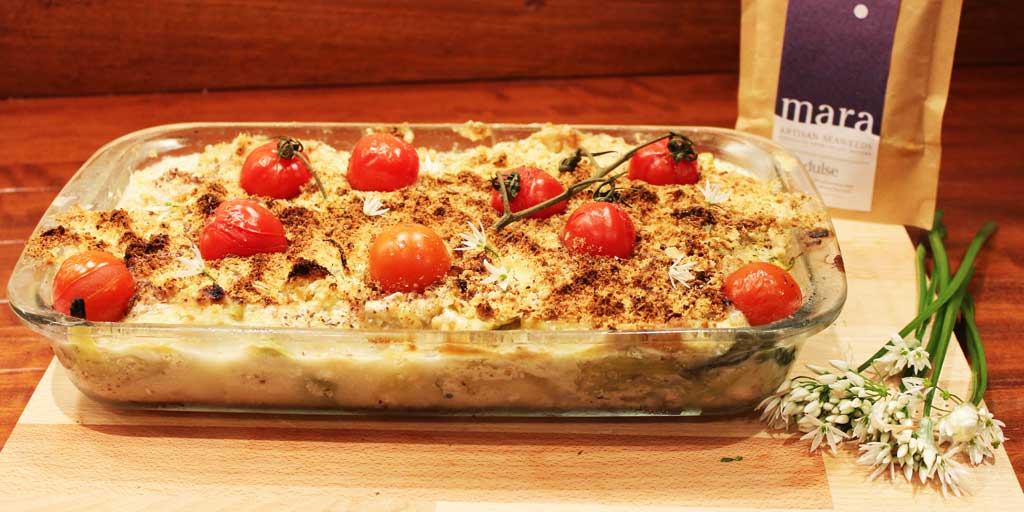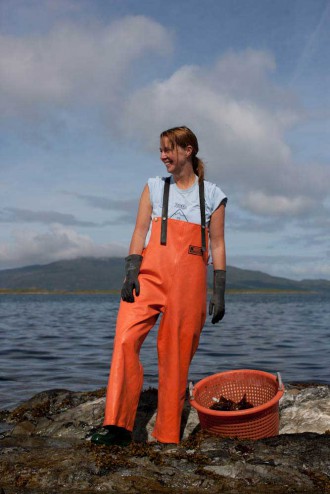How to cook with seaweed
Edible seaweed seems to be all the rage just now. Our own Billingsgate Insider mentioned the various kinds in his post a couple of weeks ago. And just the week before, David Attwood, Loch Fyne Oysters’ aquaculture director, explained how edible seaweed has a key role to play in sustainable aquaculture eco-systems, not to mention a healthy diet.
So we asked Fiona Houston (pictured right), co-founder with Xa Milne of Mara Seaweed, for advice on how to cook with it. Meaning “of the sea” in Celtic, Mara was founded by Xa and Fiona two years ago in a bid to “harness the potential of one of Scotland’s natural resources and bring a forgotten food to modern thinkers”
Mara now sells a range of seaweeds harvested from the Atlantic and North Sea. “We believe whole heartedly in our process from sea to plate: harvesting sustainably at full moon when tides are lowest to making the drying process as natural as possible in order to preserve the unique tastes and freshness of flavor,” says Fiona
Seaweed has a salty taste, but is low in sodium, while its balance of other minerals and high protein content help boost flavour. In particular, it contains natural glutomates that deliver umami, the fifth taste sensation (the other four being sweet, sour, salty, bitter), which is such a key component of Japanese food and new Nordic cuisine.
Here’s Fiona’s guide to the different varieties and how they can be used:
- Kombu When mixed in to stews, soups or juices it and pushes the taste deeper. A sprinkle on your food instead of salt, can act as a flavour enhancer
- Shony Works well as a daily seasoning: try it with breakfast eggs, or pasta dishes or in baking.
- Dulse Adds smoky, anchovy notes in meats, and is delicious cooked in butter with salmon, or with stir-fried greens, such as spinach or kale as a combination of iron-rich flavours.
- Pepper dulse Sometimes called the truffle of the sea. Think cracked pepper with notes of garlic and salt.
Fish and seaweed crumble with wild garlic, fennel and cherry tomatoes
This fish crumble evolved from a jazzed up fish pie and is probably something for the more adventurous foodie. The combined distinctive tastes of seaweed and fennel cut through the cream and rich crumble topping to create a more unusual and interesting fish dish. The crunchy crumble topping adds a different texture to the soft creamy base with the sweet juices of the roasted cherry tomatoes on top.
Ingredients
- 700g white fish (e.g., bream, monkfish)
- 1-3 fennel bulbs
- 1 Tbsp butter
- 1 handful wild garlic leaves (or 3 garlic cloves, crushed)
- 2 Tbsp chopped flat-leaf parsley
- 1 Tblsp dulse seaweed
- 1 tsp black pepper
- 100ml double cream
- 100ml fish stock
- Juice of 1 lemon
- 300g cherry tomatoes on the vine
For the crumble topping
- 80g plain flour
- 20g oats
- 20g caster sugar
- 70g cold unsalted butter cut into small cubes
- 50g Parmesan cheese, grated
- 1 Tbsp Shony seaweed
- Wild garlic flowers, to decorate
Method
- Set your to oven 190°C. Cut the fennel into thin wedges and steam them for 12 minutes. While this is cooking melt the butter and tir in the wild garlic leaves to soften. Cut up whatever fish you’re using into chunks and dot them around the bottom of an ovenproof dish. Pour over the buttery wild garlic and the steamed fennel.
- In a jug combine the fish stock, cream, lemon juice, chopped parsley, Dulse and pepper. Pour this over the fennel and fish. Put the flour, sugar and butter in a bowl and rub it through with your fingertips to create a breadcrumb consistency. Stir in the oats, Shony and Parmesan. Sprinkle the crumble mixture on top of the dish, making sure you don’t pile it too high or it will become heavy and stodgy.
- Dot the cherry tomatoes on the top pushing them into the crumble topping a bit– keep them on the vine for effect. Put the dish in the top of the oven for 20-25 minutes. It should be golden on the top with the tomatoes nicely toasted. Serve with a sprinkling of wild garlic flowers and some new potatoes and a green salad on the side.

Find out more about cooking with seaweed, including a variety of recipes, at www.maraseaweed.com.






